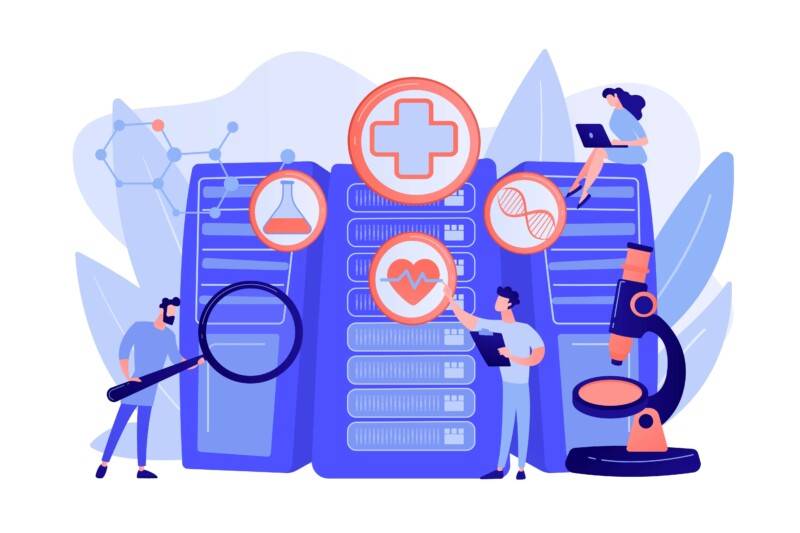Introduction:
The healthcare industry is witnessing a seismic shift, largely driven by data analytics. As data becomes more integral to healthcare delivery, understanding and leveraging the latest trends in data analytics is crucial for professionals in this sector. This blog post explores the key trends shaping the future of healthcare data analytics, providing valuable insights for data analysts committed to innovation and excellence in patient care.
1. Predictive Analytics in Patient Care:
Predictive analytics is transforming patient care from reactive to proactive. By analyzing patterns in historical patient data, healthcare providers can forecast potential health events and intervene early. This approach is particularly beneficial in managing chronic diseases, where predicting flare-ups can lead to timely, preventive care, thereby reducing emergency hospitalizations. Predictive models are also being used to identify patients at high risk of readmission, allowing healthcare providers to implement targeted follow-up care to improve outcomes. This new analysis is leading to better patient outcomes and a more efficient allocation of hospital resources.
2. Artificial Intelligence and Machine Learning:
AI and machine learning are at the forefront of a revolution in healthcare data analytics. These technologies are instrumental in deciphering complex data patterns, leading to more accurate diagnoses and personalized treatment plans. For instance, machine learning algorithms can analyze vast datasets from various sources, including medical imaging and genomic sequencing, to identify early signs of diseases like cancer, potentially saving lives through early intervention. Furthermore, AI is enhancing operational aspects of healthcare, such as optimizing patient flow in hospitals and managing supply chains more efficiently.
3. Real-Time Data Analysis:
The ability to analyze healthcare data in real-time is a game-changer. It enables healthcare providers to make immediate decisions, which is crucial in emergency care scenarios. In hospital settings, real-time data analysis aids in monitoring patient vitals to ensure timely interventions. Moreover, it supports operational efficiencies, such as tracking bed availability and managing staff rosters to ensure optimal patient care.
4. Enhanced Data Security and Compliance:
As healthcare increasingly relies on digital data, securing sensitive patient information has become paramount. Data analysts in healthcare must navigate the complexities of data security while ensuring compliance with stringent regulations like HIPAA. This involves implementing robust cybersecurity measures, conducting regular data audits, and ensuring that all data handling processes adhere to legal and ethical standards. Protecting patient data is not just a regulatory requirement, it is also crucial for maintaining patient trust and integrity in healthcare systems.
5. Integration of Wearable Technology Data:
The rise of wearable technology presents a unique opportunity for healthcare analytics. Data from devices like fitness trackers and smartwatches can be integrated with traditional medical data, offering a more holistic view of a patient’s health. This integration is pivotal in developing personalized healthcare plans, monitoring patient progress in real-time, and managing lifestyle-related diseases. Furthermore, wearable technology data can support remote patient monitoring, reducing the need for frequent hospital visits and enabling continuous care management.
6. Focus on Value-Based Care:
The shift towards value-based care is a significant trend in healthcare. This model emphasizes patient outcomes over service volume, with data analytics playing a key role in measuring and analyzing care effectiveness. Data analytics helps in tracking patient recovery, satisfaction, and the overall efficiency of healthcare services. By leveraging data, healthcare providers can make informed decisions that reduce costs and also improve the quality of care, aligning with the broader goals of the healthcare system.

Conclusion:
The landscape of healthcare data analytics is rapidly evolving, presenting both challenges and opportunities for data analysts in this field. Staying updated with these trends is essential for driving innovation and enhancing patient care. As healthcare continues to advance, the integration of cutting-edge data analytics will undoubtedly play a pivotal role in shaping the future of this vital industry.
As an analyst, you have overwhelming amounts of data to access. Let us help you optimize and visualize this data so that you can provide better results and make your life easier. Schedule a complementary consultation: https://calendly.com/thinklytics-us








